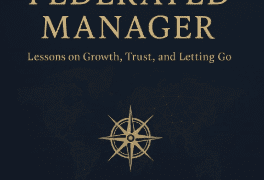Key Takeaways:
- Effective leadership after restructuring requires clear communication, presence, and transparency to rebuild trust.
- Supporting managers, prioritizing employee well-being, and retaining top talent strengthen resilience during change.
- Reinforcing values, adapting processes, and celebrating progress help teams regain stability and focus on the future.
Major restructuring is one of the most difficult transitions organizations face. Leaders must manage operational changes while guiding employees through uncertainty, balancing immediate demands with long-term morale and productivity.
This article shares 11 strategies leaders can use to stabilize their organizations, rebuild confidence, and help teams adapt with resilience during significant change.
1. Don’t Mistake Silence for Stability
When a company goes through restructuring, a quiet workplace can be misleading. Employees may appear calm, but silence often masks uncertainty, worry, or disengagement. Without proactive communication, individuals may fill the information gap with speculation or assumptions, which can erode trust.
“In the weeks following a reorganization, many CEOs look for visible signs of disruption: complaints, turnover, missed deadlines. But one of the most dangerous signals is actually silence,” notes Gloria St. Martin-Lowry, president of HPWP Group. “When employees stop asking questions, stop offering feedback, or simply nod through meetings, it’s not a sign of calm; it’s a warning.”
Regular, intentional communication demonstrates attentiveness and creates opportunities for employees to raise concerns. Stability is best achieved when employees know they have a reliable source of information, rather than being left to interpret silence on their own.
2. Spend Time Where the Loss Is Felt Most
Restructuring often creates uneven disruption across an organization. Some teams may lose colleagues, responsibilities, or resources, while others may experience less change. Leaders who make themselves visible where the impact is greatest show commitment to addressing concerns where they matter most.
“On the front line, the absence of a colleague often means longer hours, strained handoffs, or emotional distance. Leaders need to feel that loss themselves — not through reports, but by showing up. Immersion builds understanding,” adds Vibhas Ratanjee, a Senior Practice Expert and Leadership Development Specialist at Gallup.
Investing time where disruption is highest provides an opportunity to listen and learn about the specific issues employees are facing. By offering guidance and addressing questions directly, leaders can help rebuild morale and reduce feelings of isolation.
3. Communicate Frequently and Transparently
Clear and consistent communication is one of the most effective ways to manage uncertainty after a restructuring. Employees want to know what has already changed and what may be coming next. When leaders provide updates, even small ones, they reduce speculation and demonstrate accountability.
Jonathan Bernhardt, CEO of Hedley and Bennett, a company known for its chef knife collection, says, “Frequent and transparent communication prevents misinformation from taking root. Employees are more resilient when they understand the reasons behind changes and the direction moving forward.”
When leadership commits to regular updates, they create an environment where employees feel included rather than left in the dark. Openness about what is known and unknown builds credibility and reinforces trust, even when leaders don’t have all the answers.
4. Rebuild a Shared Vision
After a major restructuring, employees often struggle to see how their work connects to the company’s future. Without a clear vision, teams can lose focus and motivation.
“Leaders need to take deliberate steps to reframe goals and explain how the new structure supports long-term objectives,” highlights Titania Jordan, CMO of Bark Technologies, a company that specializes in a kids cell phone with built-in safety features, the Bark Phone. “This process reestablishes alignment across the organization and helps employees find meaning in their contributions.”
Rebuilding vision requires more than delivering a mission statement. Leaders must actively connect strategic priorities with their teams’ day-to-day responsibilities. Doing so helps give employees context for their work, making it clear how individual efforts contribute to larger goals.
5. Support Managers as Change Carriers
Middle managers often bear the greatest responsibility for translating organizational changes into action. They are tasked with explaining new directives, supporting employees, and maintaining productivity, all while adjusting on their own.
“Without the right tools and guidance, managers may struggle to carry the weight of leadership expectations and employee concerns. Providing resources, coaching, and clear direction helps ensure they succeed in this critical role,” notes Shaunak Amin, CEO and Co-Founder of Stadium, a company that makes holiday gifting easy.
When managers are supported, they can serve as steady sources of reassurance and clarity for their teams. Investing in their development strengthens their leadership skills and creates consistency across the organization.
6. Prioritize Employee Well-Being

Photo Source: Adobe Stock
Restructuring often increases stress and uncertainty, which can affect morale and performance. Employees may feel pressure to prove their value or worry about future changes. Addressing stress and burnout is essential for maintaining engagement and productivity during times of transition.
Andy Khubani, CEO of Copper Fit, a company that offers back braces, adds, “Acknowledging the emotional impact of restructuring and offering support demonstrates respect for employees. When well-being is prioritized, teams are better equipped to adapt.”
Practical steps like encouraging time off, providing access to resources, or simply recognizing the strain employees face can make a meaningful difference. When employees feel valued and supported, they are more likely to stay committed to the company’s new direction.
7. Identify and Retain Key Talent
If you choose to restructure, it can create uncertainty that causes high performers to consider leaving the organization. As soon as valuable employees begin to think about departing, the business risks losing institutional knowledge and leadership potential.
“Retaining top talent during restructuring requires clear communication and recognition,” says Brianna Bitton, Co-Founder of O Positiv, a company that offers MENO vaginal moisture capsules. “Employees are more likely to stay when they feel secure and valued.”
Efforts to retain talent may include offering growth opportunities, involving employees in important projects, or simply acknowledging their contributions. By demonstrating that high performers have a place in the company’s future, leaders reduce the risk of attrition.
8. Encourage Flexibility and New Roles
Change inevitably shifts responsibilities, often requiring employees to adapt to unfamiliar tasks or functions. Framing these shifts as opportunities rather than burdens helps employees embrace flexibility.
“Encouraging adaptability supports the immediate transition and also builds long-term resilience within the workforce. Flexibility becomes an asset when new challenges emerge in the future,” highlights Kit Ng, General Manager of RedWolf Airsoft, a company that specializes in airsoft guns.
Promoting flexibility requires clear communication and support. Employees may need training or mentorship to succeed in their new roles, and leaders who provide those resources increase the likelihood of success.
9. Reevaluate Processes and Priorities
The process of restructuring often reveals that existing processes may no longer fit the new organizational design. Workflows built for a previous structure can create inefficiencies if left unaddressed.
Jack Savage, Chief Executive Officer of Everyday Dose, a company that offers functional coffee, says, “After restructuring, leaders need to take a close look at how tasks are completed, which priorities still align with business goals, and where adjustments are required. Reassessing these areas helps the organization operate effectively in its new form.”
A systematic review of processes prevents confusion and reduces wasted effort. By reevaluating workflows, leaders demonstrate adaptability and guarantee that the organization can move forward efficiently and with purpose.
10. Reinforce Organizational Values
Values provide continuity and stability during times of disruption. Employees may be unsure of their roles or the company’s direction, but clear values can anchor decision-making and behavior.
“When restructuring brings uncertainty, reaffirming core values provides a sense of stability,” adds Emily Greenfield, Director of Ecommerce at Mac Duggal, a company that offers prom dresses. “That’s why leadership teams that consistently emphasize organizational values help employees feel connected to a larger purpose, even when structures change.”
Values serve as a guiding framework for both leaders and employees. They influence how teams approach challenges, interact with one another, and respond to external pressures.
By reinforcing values during restructuring, leaders can make sure that the culture remains strong, even as operations evolve. This helps employees maintain a sense of belonging and clarity about what the organization stands for.
11. Celebrate Small Wins To Build Momentum
After a restructuring, employees often feel the weight of uncertainty and change. Recognizing progress, even in small ways, can help rebuild morale and remind teams of their achievements. Celebrating milestones offers encouragement and reinforces that the organization is moving forward. Leaders who acknowledge success create an environment where employees feel motivated to continue contributing.
“Celebrating small wins during restructuring builds confidence and momentum. Recognizing progress reassures employees that their efforts are making a difference,” notes Justin Soleimani, Co-Founder of Tumble, a company that specializes in washable rug collections.
Acknowledging wins doesn’t require extensive events or costly rewards. Simple recognition, like highlighting team achievements in meetings or sharing success stories, can boost engagement.
By celebrating progress, leaders demonstrate appreciation and set a positive tone for the future. This practice helps counterbalance uncertainty with optimism and keeps employees focused on collective goals.
Guiding Teams Through Change With Confidence
Restructuring challenges both the operational and emotional resilience of an organization.
“Leaders who remain visible, communicate clearly, and reinforce values create stability during times of transition. By supporting managers, prioritizing employee well-being, retaining key talent, and celebrating progress, they demonstrate that adaptation is possible,” says Sanford Mann, CEO of American Hartford Gold, a company that helps you buy gold.
Each of the 11 strategies outlined in this guide provides a pathway for guiding teams through disruption with greater confidence.



































